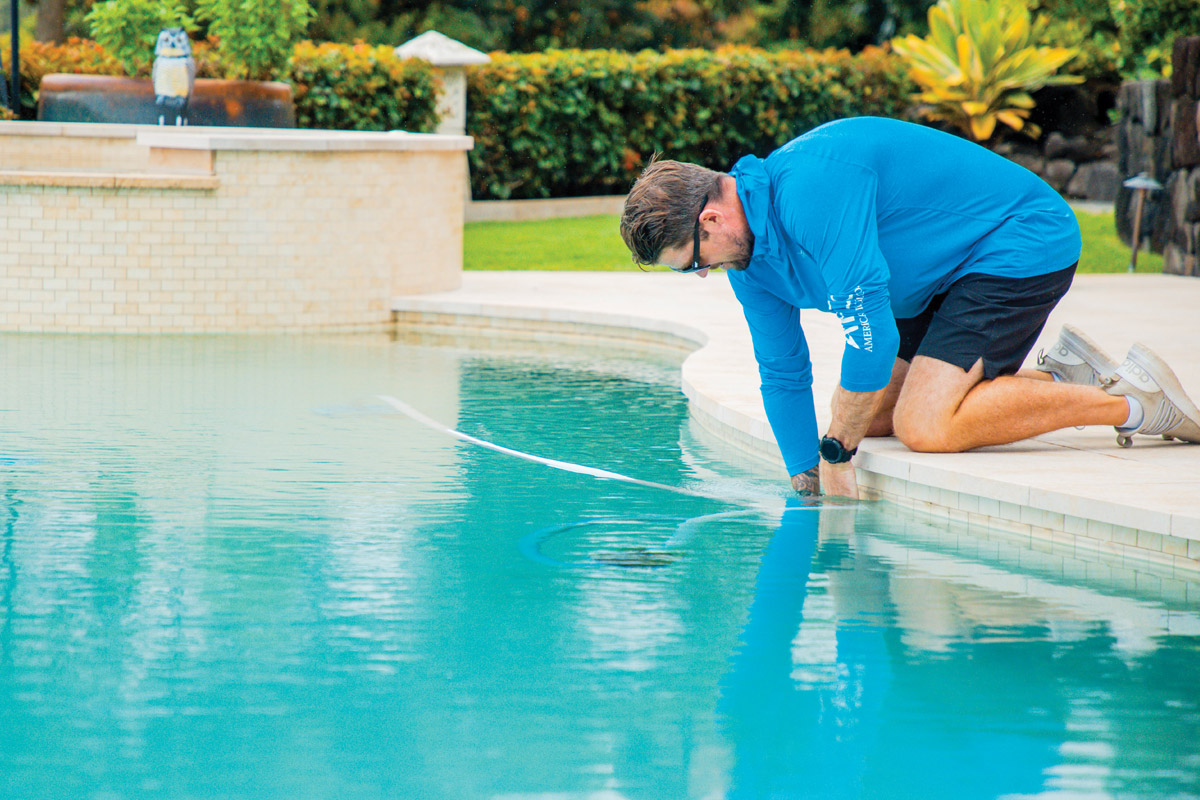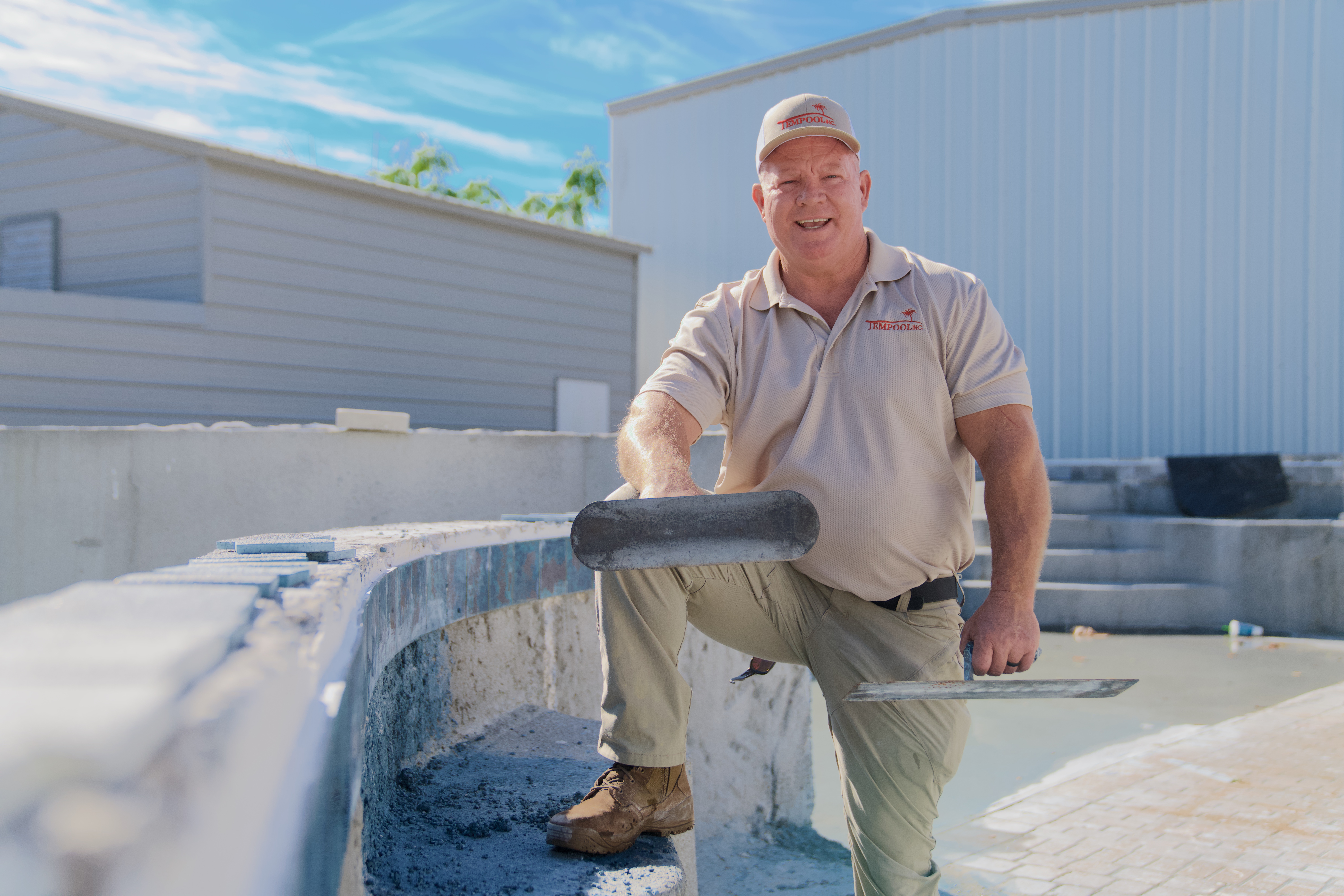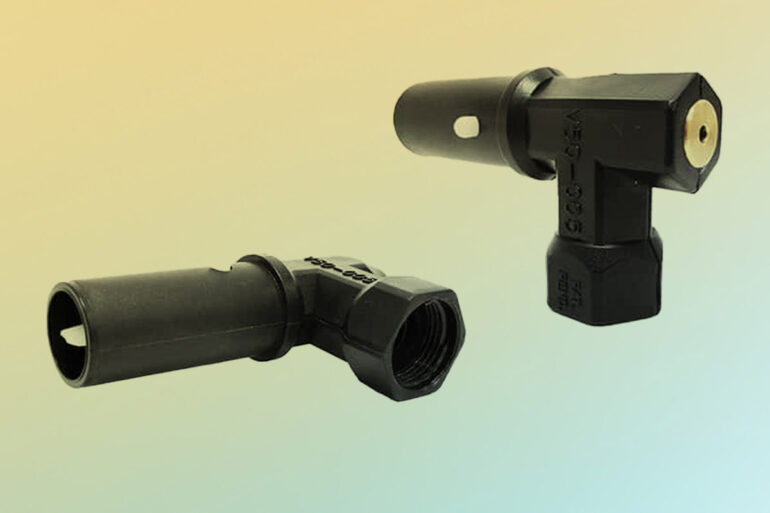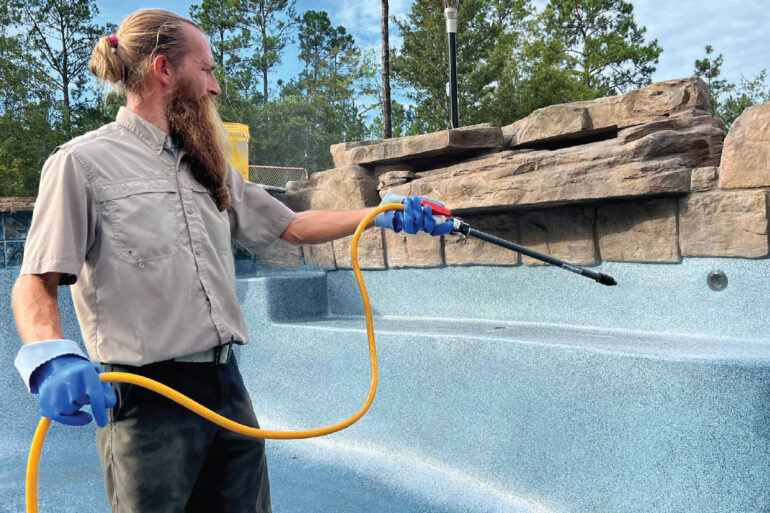Keeping Bodies and Businesses Safe

Tips for pool pros to remain flexible and injury-free
When you’re a pool professional, radiating pain in your lower back or shoulders may not be the result of a day spent cleaning out the garage or shooting hoops with the kids — it could be a wake-up call for an injury. Pros repeatedly perform the same physically demanding tasks as they work to maintain, build, repair or install swimming pools and equipment, which can lead to injury.
Injuries from these overuse and occupational hazards can have professional and personal impacts, so avoiding them should be a top priority for employees and businesses.
“Whether it’s construction, packaging or manufacturing, it [can cause] sprains, strains and overexertions,” says Jared Goble, with George Petersen Insurance Agency, which provides safety training guidelines online for the Marin Builders Association in San Rafael, California. “Ergonomics and body mechanics should be foremost on everyone’s minds.”
When it comes to overuse, muscle strains, ligament sprains, tendonitis and repetitive strain injuries come to mind. These affect the shoulders, back, arms and knees and develop over time, often because of overstretching, overreaching, twisting or carrying heavy loads.
Work-Fit, which has 43 locations nationally and provides injury prevention and management services to employers, offers online tips for workplace injury prevention.
“Flexibility can be key to workplace resilience, due to increased range of motion,” says Kimberly DiVincenzo, director of operations for Work-Fit. “[It] also helps postural issues that can lead to future injury.”
Jon Temple, president of Tempool Inc. in Jacksonville, Florida, has hired a trainer to come to his pool plastering business and teach his employees — all of whom are involved in plastering 70-80 pools a week — stretches for their shoulders, lower back and legs. His team members start their day, separately, by doing these exercises (“Sometimes, it looks like a yoga class,” he jokes). “It’s important they know how to take care of body parts before, during and after work,” he says.
Starting the day with an activity like stretching “can also sharpen mental focus and relieve stress,” both of which are important for employees’ physical and mental health, DiVincenzo says.
To keep employees healthy, Temple even changed the equipment his team uses.
“We use 14-inch trowels although the standard is 22-24 inches,” he says. “This helps prevent lateral epicondylitis [tennis elbow], which you can’t do anything about in later years except to take Advil on a daily basis, which isn’t very healthy.”
The three most common injury-causing culprits are jumping, climbing and lifting — from a one-time bad decision to a pattern of bad habits. Getting in and out of pools is an issue; not surprisingly, the safest way to do so is to use the entry, not jumping down from the deck as a quick way to get inside.
Jumping down from and climbing up to truck beds is another issue. Tempool installed 5-foot ladders on both sides of its work trucks to provide employees a safer way to get in and out of the back, Temple says.
According to Temple, lifting from chest height — like when retrieving heavy items from a truck bed — causes most back problems, so he created storage spaces on the bottom of every truck so employees can remove the heavy toolboxes from a safe height. The toolboxes also have wheels for less demanding transport through backyards.
For pool pros with employees, Temple recommends hiring a workmen’s comp auditor once a year.
“He comes out and looks at how we work and advises us how to keep a safe workplace, an efficient workplace and a more profitable workplace.”
Overall, Temple says, it’s important to approach injury prevention from a proactive perspective.
“My whole safety program was built from the beginning on how to avoid problems due to injury,” he says.







